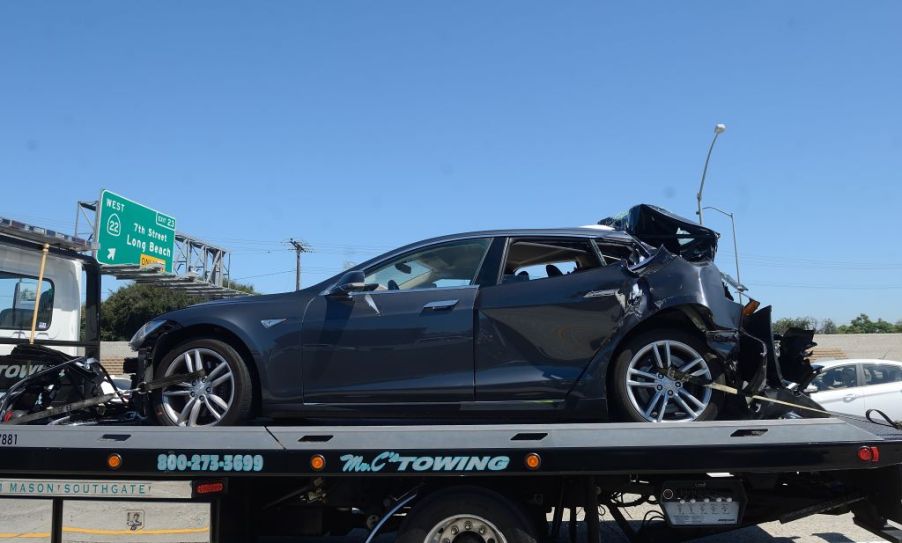
NTSB Report: Electric Vehicle Fires Endanger Emergency Responders
Because of the way electric vehicle fires burn first responders are endangering themselves. The high-voltage lithium-ion battery fires can’t be extinguished and can burn for days. Some towing companies have been unpleasantly surprised when two or three days after bringing a burnt EV into a holding yard they erupt in flames. Now a National Transportation Safety Board report confirms that EV manufacturers don’t provide nearly enough information in their emergency response guides to make them safe.
The NTSB released the report after investigating four EV fires with lithium-ion batteries according to carcomplaints. Not only can these electric vehicle fires reignite days afterward but their high-voltage batteries can give electric shocks that can kill responders if touched. Cars catching back on fire are called “thermal runaway.” It is an uncontrolled increase in the battery’s temperature and pressure.
Because of the makeup of these batteries, thermal runaway happens easily

Because of the makeup of these batteries, thermal runaway happens easily. That’s because there are over 7,000 lithium-ion cells which are a bit larger than an AA battery. They hold “stranded” energy that remains. That’s why one Tesla Model X it investigated caught on fire five days after the accident happened.
The damage in these crashes can be by force, coolant leakage, heat, or water getting into them. Switches in the battery system are designed to open high voltage circuits stopping any further propulsion. These switches also act to isolate the batteries from the rest of the vehicle. Batteries with this damage cease to function but maintain their energy. This can also lead to thermal runaway.
Three of the lithium-ion batteries were electric vehicle fires from high-speed crashes

Three of the lithium-ion batteries that ignited were from electric vehicle fires from high-speed crashes. A fourth EV had been in a similar crash but did not ignite. From these four the investigators said there was an “inadequacy of vehicle manufacturers’ emergency response guides.” It found that problems were caused by “gaps in safety standards and research related to high-voltage lithium-ion batteries involved in high-speed, high-severity crashes.”
So now manufacturers need to go back and develop more specific protocols around responses by emergency crews. Research needs to be directed at ways that batteries can be “de-energized” to eliminate the stranded energy. In addition, the NTSB says battery storage protocols need to be established so as not to cause additional damage.



